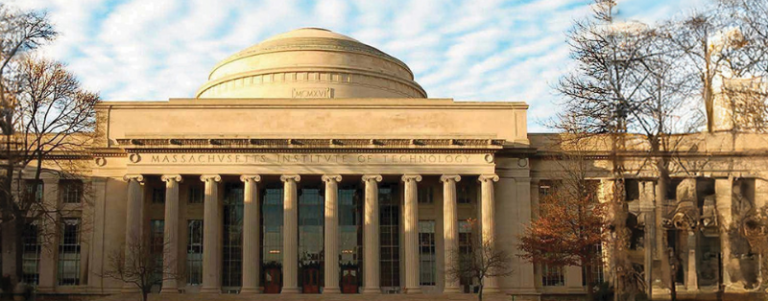How Hill Climbing in AI is Going to be a Gamechanger

Efficient problem-solving algorithms form the cornerstone of AI. Hill climbing in AI is one such algorithm tasked with finding the best solution to a problem in a reasonable amount of time. Interestingly, this technique is inspired by the analogy of climbing a hill and is essential for tackling the intricate optimization problems in AI. This blog offers a deeper insight into hill climbing and its practical use-case scenarios.
The Analogy of Hill Climbing

While scaling a hill, you ought to find the best route to gradually take you higher. Each step you take represents a small change or an incremental movement towards the peak. Naturally, you evaluate the surroundings to find the highest possible step from your current position. Once you have done that, you move to that position and repeat the process. This continues until no higher steps are available, indicating that you have reached a peak.
Similarly, hill climbing in AI operates on the principle of making incremental improvements toward a better state. In fact, it can also be applied to various optimization problems, including but not limited to route optimization algorithms. Here is how it works: it evaluates the neighboring states of the current solution and chooses the one with the highest fitness score. Then, this process continues iteratively, leading to a local maximum or, hopefully, the global maximum. In essence, it is a gradual progress to a better “vantage point”.
How Hill Climbing Works
Let’s look at how hill climbing in AI works:
A. Initial State
The hill climbing algorithm in AI starts with a randomly chosen initial state. This represents the starting point in the search space. What’s more, the choice of the initial state can significantly impact the quality of the final solution.
B. Neighbor Evaluation
The algorithm also evaluates the fitness score of neighboring states. The score essentially indicates how close a state is to the optimal solution. As noted in the actual hill climbing analogy above, this would be akin to the person evaluating the height of the surrounding steps.
C. Move to a Better State
Next, the algorithm selects the state with the highest fitness score among the neighbors. This state becomes the new current state. For this reason, moving to a better state ensures that the algorithm continuously improves the solution.
D. Repeat
This process is repeated until no better neighboring state is found. When this happens, the algorithm has reached a peak, and the current state is considered the solution. This iterative process ensures that the algorithm explores the search space effectively and efficiently.
ALSO READ: 5 Interesting AI Coding Tools Programmers Must Know About
AI and ML Courses
Types of Hill Climbing in AI
Hill climbing algorithms in AI come in different variations, each with its unique approach to solving optimization problems. Here are the three primary types of algorithms of hill climbing in AI:
1. Simple Hill Climbing
Simple hill climbing is the most basic form of the local search algorithms in AI. It evaluates neighboring nodes one by one and selects the first one that improves the current state. Then, if a better neighboring state is found, the algorithm moves to that state. However, if no better state is found, the algorithm remains where it is.
Algorithm Steps:
- Evaluate the initial state. If it is the goal state, return success and stop.
- Loop until a solution is found or no new operators are left to apply.
- Select and apply an operator to the current state.
- Check the new state:
- If it is the goal state, return to success and quit
- In case it is better than the current state, assign the new state to the current state
- However, if it is not better than the current state, return to step 2
- Exit
2. Steepest-Ascent Hill Climbing
The steepest ascent is a variation of simple hill climbing. This algorithm evaluates all neighboring nodes and selects the one with the highest improvement. It consumes more time than simple hill climbing because it searches multiple neighbors before making a move.
Algorithm Steps:
- Evaluate the initial state. If it is the goal state, return success and stop. Otherwise, make the initial state the current state.
- Loop until a solution is found or the current state does not change.
- For each operator that applies to the current state:
- Apply the operator and generate a new state
- Evaluate the new state
- If it is the goal state, return to success and quit
- If it is better than the current state, update the current state
- Exit
3. Stochastic Hill Climbing
Stochastic hill climbing introduces randomness into the selection process. Instead of evaluating all neighboring nodes, it randomly selects one and decides whether to move based on the improvement. For this reason, this approach can help the algorithm avoid getting stuck in local maxima.
Algorithm Steps:
- Evaluate the initial state. If it is the goal state, return to success and stop.
- Loop until a solution is found or the current state does not change.
- Randomly select a neighboring state.
- Evaluate the new state:
- If it is the goal state, return to success and quit
- If it is better than the current state, update the current state
- Exit
Advantages of Hill Climbing
Hill climbing algorithms in AI offer several benefits, making it a popular choice for solving AI optimization problems:
A. Simplicity
Hill climbing is straightforward and easy to understand, making it accessible for beginners and easy to implement. Moreover, its simplicity allows for quick development and testing of AI optimization problems.
B. Efficiency
Hill climbing in AI quickly finds a good solution, which is crucial for time-sensitive applications. As a result, by focusing on incremental improvements, the algorithm efficiently narrows down the search space.
C. Flexibility
The algorithm can be easily adapted to various problems by modifying the heuristic function. Furthermore, this flexibility makes it suitable for a wide range of AI optimization problems.
D. Resource Efficiency
Hill climbing in AI requires less memory and computational power than other complex algorithms. It only keeps track of the current state, reducing the overhead of maintaining a search tree or graph.
Disadvantages of Hill Climbing

Despite its strengths, hill climbing has some notable limitations:
A. Local Optima
Hill climbing in AI can get stuck in local optima. These are suboptimal solutions that appear as peaks but are not the best possible solutions. For this reason, the algorithm often moves to neighboring states that improve the current state and misses the global optimum.
B. Plateaus
In some cases, hill climbing in AI can become trapped in flat regions (plateaus) where neighboring states have similar fitness scores, making it hard to decide on the next move. As a result, the lack of gradient can cause the algorithm to stall, making it impossible to find a better solution.
C. Ridges
In ridges, small steps may not lead to the optimal solution due to the slope, causing the algorithm to stall. Consequently, the algorithm’s inability to progress significantly in these regions can limit its effectiveness.
D. Sensitivity to Initial State
The quality of the final solution heavily depends on the initial state. This is why a poor starting point can lead to suboptimal results. Therefore, this sensitivity means that different algorithm runs can produce vastly different outcomes.
ALSO READ: What is Artificial Intelligence Optimization? All You Need to Know
Advanced Hill Climbing Techniques
To overcome the limitations of basic hill climbing in AI for machine learning parameter tuning, several advanced techniques can be employed:
1. Random Restarts
One effective strategy to escape local optima is random restarts. After the algorithm gets stuck in a local optimum, it restarts from a different random initial state. Subsequently, repeating this process increases the chances of finding the global optimum.
How it works:
- Initialize: Start with a random state
- Run Hill Climbing: Perform the standard hill climbing process
- Restart: If the algorithm gets stuck in a local optimum, restart with a new random state
- Repeat: Continue this process multiple times to increase the likelihood of finding the global optimum
Random restarts introduce variability and exploration, helping the algorithm to avoid being trapped in local optima. Combined with local search algorithms in AI, this technique is especially useful in complex problem spaces where the likelihood of encountering multiple local optima is high.
2. Simulated Annealing
Simulated annealing is a sophisticated technique that combines hill climbing with random walks. Moreover, it mimics the process of annealing in metallurgy, where materials are heated and then slowly cooled to remove defects.
How it works:
- Initialization: Start with an initial state and an initial temperature
- Neighbor Selection: Randomly select a neighboring state
- Evaluation: If the neighbor is better, move to it. If not, move to it with a probability that decreases over time
- Temperature Reduction: Gradually reduce the temperature according to a cooling schedule.
- Repeat: Continue this process until the system cools and stabilizes
Simulated annealing allows the algorithm to explore a wide range of states initially and gradually focus on better solutions as the temperature decreases. Furthermore, this balance between exploration and exploitation makes it effective in finding global optima.
3. Genetic Algorithms
Genetic algorithms are inspired by natural selection. They use a population of solutions, evolving them over time through selection, crossover, and mutation.
How it works:
- Initialization: Start with a population of random solutions
- Selection: Evaluate the fitness of each solution and select the best ones
- Crossover: Combine pairs of solutions to create new offspring
- Mutation: Introduce random changes to some solutions
- Iteration: Repeat the process for several generations
Genetic algorithms can explore a vast search space and maintain diversity in the population, thus reducing the risk of getting stuck in local optima. This is why they are particularly effective for complex optimization problems.
ALSO READ: Focus on These Top 10 Jobs AI Will Create to Advance Your Career
Applications of Hill Climbing in AI
Hill climbing algorithms have numerous real-world applications, showcasing their versatility and utility in AI:
1. Route Optimization
Hill climbing can be used in route optimization algorithms to find the shortest or fastest paths. For example, it can help determine the most efficient route for delivery trucks, thereby saving time and fuel.
Example: In logistics and transportation, hill climbing can optimize delivery routes to minimize travel time and costs. The algorithm essentially ensures timely deliveries by continuously refining the routes based on traffic data and delivery constraints.
2. Machine Learning Parameter Tuning
In machine learning, hill climbing is employed for parameter tuning. By adjusting parameters such as learning rate and number of hidden layers, hill climbing helps find the combination that yields the best model performance.
Example: In neural network training, hill climbing can optimize hyperparameters such as learning rate, batch size, and network architecture. This tuning process enhances model accuracy and efficiency.
3. Game-Playing AI Strategies
Hill climbing is also used in game-playing AI strategies. It helps in making strategic moves by evaluating possible future states and selecting the one with the highest potential.
Example: In board games such as chess, hill climbing can evaluate possible moves and their outcomes, guiding the AI to make optimal decisions. This strategic planning improves the AI’s performance against human players.
4. Autonomous Vehicle Navigation
Autonomous vehicle navigation relies on hill climbing. The algorithm helps plan the optimal path, avoid obstacles, and ensure efficient travel and safety.
Example: Self-driving cars use hill climbing to continuously assess and adjust their routes based on real-time traffic data, road conditions, and obstacles. This dynamic routing enhances safety and efficiency.
5. Scheduling and Resource Allocation
Hill climbing in AI is used in scheduling tasks and allocating resources efficiently. It helps in finding optimal schedules that maximize productivity and minimize conflicts.
Example: In manufacturing, hill climbing in AI can optimize the production schedule to ensure that machines are utilized efficiently, reducing downtime and increasing output.
ALSO READ: Mastering Machine Learning Classifications and its Applications – A Rundown
Here’s a Python3 code snippet demonstrating hill climbing in AI for a local search problem with an explanation provided below:
| import random def objective_function(x): return -x**2 + 4*x def hill_climbing(objective, start_x, step_size, max_iter): current_x = start_x current_value = objective(current_x) for i in range(max_iter): next_x = current_x + random.choice([-step_size, step_size]) next_value = objective(next_x) if next_value > current_value: current_x = next_x current_value = next_value print(f”Iteration {i+1}: x = {current_x}, f(x) = {current_value}”) return current_x, current_value # Parameters start_x = random.uniform(-10, 10) step_size = 0.1 max_iter = 100 # Run hill climbing best_x, best_value = hill_climbing(objective_function, start_x, step_size, max_iter) print(f”Best solution found: x = {best_x}, f(x) = {best_value}”) |
Explanation
1. Objective Function: The function f(x)=−x2+4xf(x) = -x^2 + 4xf(x)=−x2+4x is defined.
2. Hill Climbing Function:
- Starts from a random initial value (start_x)
- Iteratively explores neighboring states by adding or subtracting a small step size
- Moves to a new state if it improves the objective function value
- Stops after a maximum number of iterations
3. Parameters:
- start_x: The starting point in the search space, chosen randomly within a range
- step_size: The size of the step taken in each iteration
- max_iter: The maximum number of iterations the algorithm will run
4. Execution: The hill climbing function is called, and it prints the best solution found after the specified number of iterations.
ALSO READ: These Top 5 AI Tools are Making Emeritians Productive
At Emeritus, we champion the pursuit of knowledge and adaptation to change, recognizing that AI plays a pivotal role in shaping the future. Explore our comprehensive artificial intelligence courses and machine learning courses to advance your career in this domain.
Write to us at content@emeritus.org

















